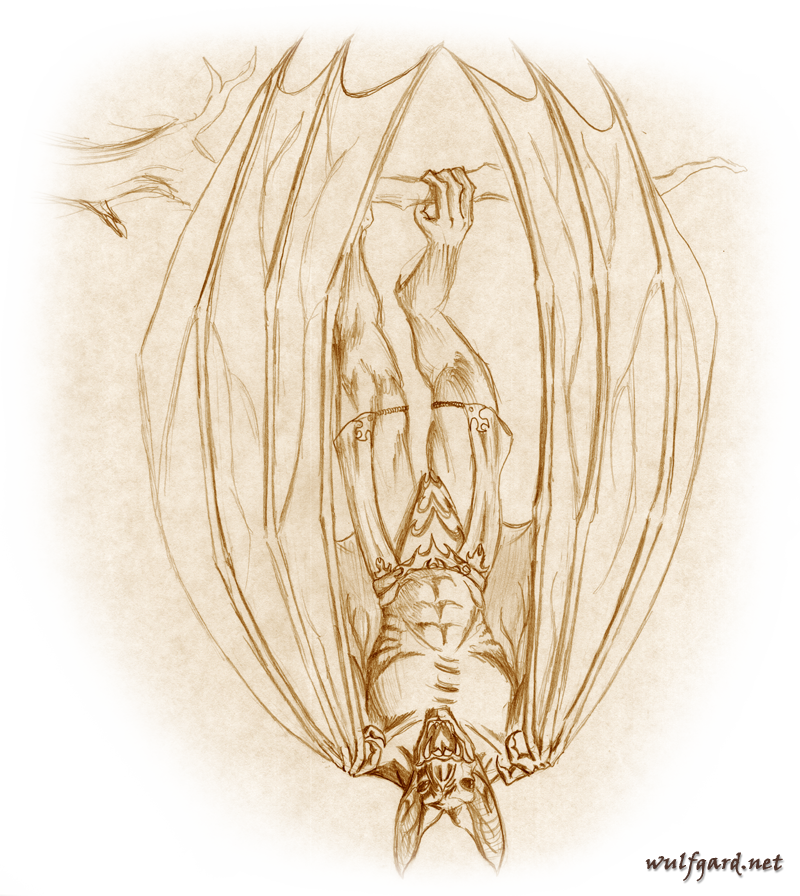Fangs
Time for something incredibly important – something that, today, most people immediately associate with vampires and will think of first the moment you say “vampire,” maybe even as quickly as or before actual blood.
Fangs! We all love fangs. Well, I do, anyway. But did vampires actually have fangs in folklore? The answer will surprise you – and it all comes down to the story behind vampire bats.

The answer is… No.
In folklore, vampires did not have fangs.
Although there are many elements to what we think of as vampires today that were popularized by pop culture but have their roots in folklore (more on those in later facts!), fangs stand out incredibly as something that came 100% from pop culture, not from folklore at all.
Vampires in fangs did not always physically drink blood: many folklore vampires take ethereal forms instead of corporeal: mists that drain the life-force or blood from their victims. Others, it is not really specified how they retrieved the blood, only that they did. Still others bite the neck/throat, but they don’t have fangs, they just use their teeth. Still others were a little more like cannibals than what we think of as vampires today.
So where could the fangs have come from?
The vampire who popularized fangs was, of course, Count Dracula from Bram Stoker’s Dracula, published in 1897.
There are several instances where Dracula is specified to have “sharp teeth,” though the word “fangs” is never actually used in the book. “Sharp white teeth,” in particular, is a very common phrase…
The mouth, so far as I could see it under the heavy moustache, was fixed and rather cruel-looking, with peculiarly sharp white teeth; these protruded over the lips […]
The Count smiled, and as his lips ran back over his gums, the long, sharp, canine teeth showed out strangely; he answered:— […]
noticing his quiet smile, with the sharp, canine teeth lying over the red underlip […]
I could feel the soft, shivering touch of the lips on the super-sensitive skin of my throat, and the hard dents of two sharp teeth, just touching and pausing there.
When Lucy is described as turning into a vampire, her teeth too become sharp…
In particular, by some trick of the light, the canine teeth looked longer and sharper than the rest.
Lucy, after becoming a vampire, is continually described as having such sharp teeth, like Dracula. So where did he get the idea?
Vampire bats. Another passage from Dracula…
Can you tell me why in the Pampas, ay and elsewhere, there are bats that come at night and open the veins of cattle and horses and suck dry their veins; how in some islands of the Western seas there are bats which hang on the trees all day, and those who have seen describe as like giant nuts or pods, and that when the sailors sleep on the deck, because that it is hot, flit down on them, and then—and then in the morning are found dead men, white as even Miss Lucy was?”
Something to bear in mind: vampire bats are not native to Europe. Vampire bats were discovered in the New World in 1810. Bats in Europe did not include any “vampiric” species.
The newly-discovered bats were named “vampire bats” because of the fact that they drink blood, not because they have fangs. Thus, while the bats got their name from vampire legends, the vampire legends got their fangs from the bats.
Something else interesting: although Dracula certainly popularized vampires with fangs, it’s debatable if Bram Stoker was the first to have the idea. In 1819, John William Polidori published The Vampyre. In it, the vampire is not actually specified to have fangs, but someone does see the mark of the vampire on the victim’s throat, from “teeth opening the vein,” and we do know that Bram Stoker took great inspiration from this book when writing Dracula. There was also Varney the Vampire, but he’s like the weird cousin, and he didn’t come before Polidori’s vampire, though he did exhibit almost all the same popular modern vampire tropes that Dracula does.
But Dracula was the more successful (and better-written) novel, so it is the one that became incredibly famous and timeless. It is to Dracula that we owe the overwhelming majority of our concepts of modern pop culture vampires – and greatest among those aspects is the fangs, which originate from pop culture alone.
Now, you may have heard that vampires in folklore do in fact have fangs – because so many modern books that claim to be on folklore about things like vampires and werewolves have plenty of false information in them and will make claims like werewolves that are weak to silver – and vampires that have fangs or some other relation to bats. Why is this? Because they don’t do good enough source checking and they believe whatever they read.
The trouble with these is that they are simply inaccurate. This really shows when you go back to older sources that were published well before these concepts arose in pop culture – and you find that, back then, even just a little bit closer to when people had many more widespread and truly believed concepts of these things (and certainly in the primary sources: the actual stories about them at the time of their belief), they didn’t talk about things like silver in relation to werewolves or fangs on vampires at all. Why? Because it was conceptualized entirely by modern or relatively modern popular culture, not folklore.
So there you have it! One of everyone’s favorite aspects of vampires comes from pop culture alone, not from folklore. Hey, I’m not saying folklore is always better. Just usually and in most aspects. Pop culture has some good ideas, too!